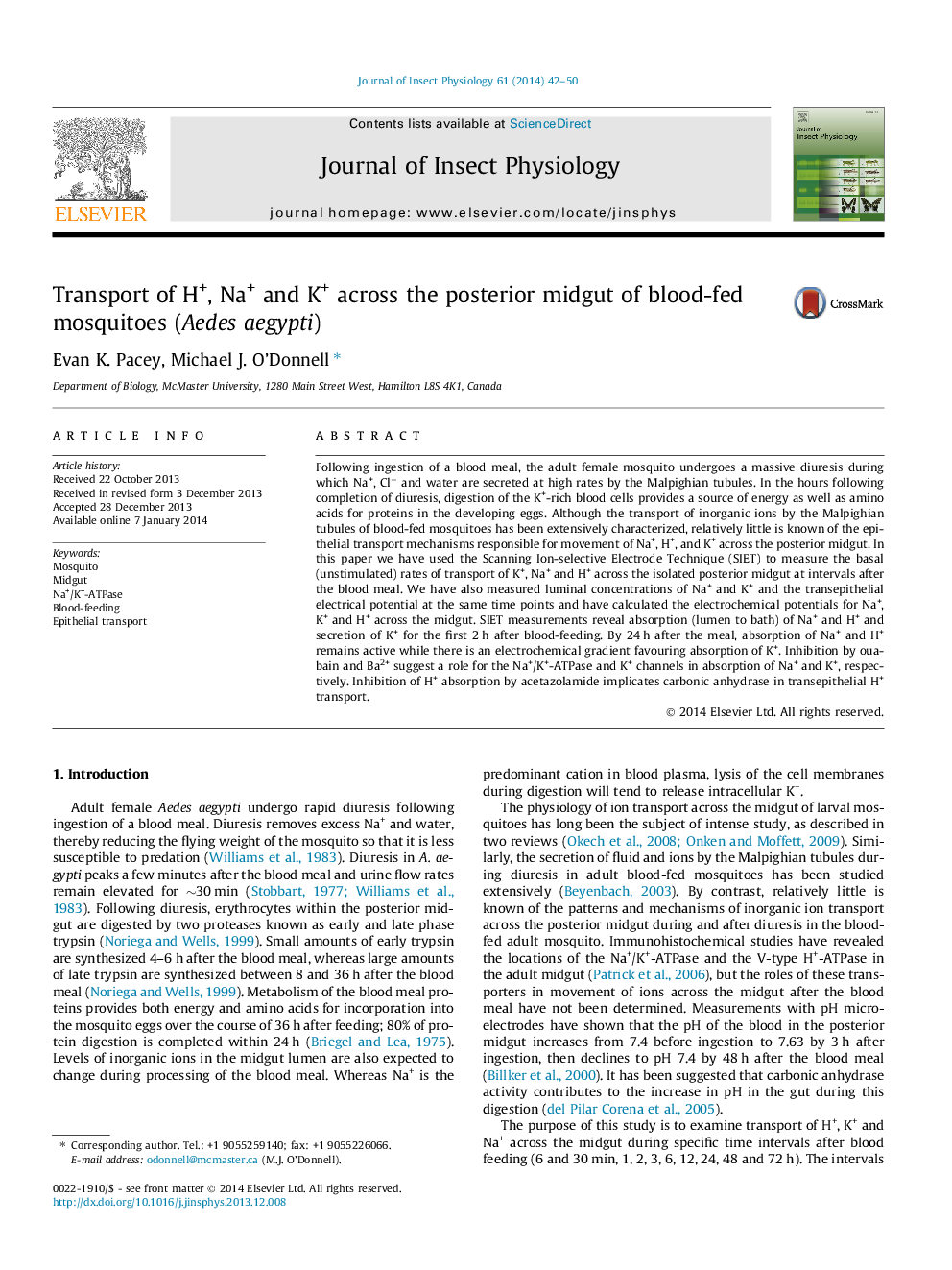| کد مقاله | کد نشریه | سال انتشار | مقاله انگلیسی | نسخه تمام متن |
|---|---|---|---|---|
| 5921683 | 1571009 | 2014 | 9 صفحه PDF | دانلود رایگان |

- Transepithelial H+, K+, Na+ transport measured in midguts of blood fed Aedes aegypti.
- Luminal ion concentrations and transport rates measured electrophysiologically.
- Na+ transport inhibited by ouabain.
- K+ transport inhibited by K+ channel blocker Ba2+.
- H+ transport inhibited by carbonic anhydrase inhibitor acetazolamide.
Following ingestion of a blood meal, the adult female mosquito undergoes a massive diuresis during which Na+, Clâ and water are secreted at high rates by the Malpighian tubules. In the hours following completion of diuresis, digestion of the K+-rich blood cells provides a source of energy as well as amino acids for proteins in the developing eggs. Although the transport of inorganic ions by the Malpighian tubules of blood-fed mosquitoes has been extensively characterized, relatively little is known of the epithelial transport mechanisms responsible for movement of Na+, H+, and K+ across the posterior midgut. In this paper we have used the Scanning Ion-selective Electrode Technique (SIET) to measure the basal (unstimulated) rates of transport of K+, Na+ and H+ across the isolated posterior midgut at intervals after the blood meal. We have also measured luminal concentrations of Na+ and K+ and the transepithelial electrical potential at the same time points and have calculated the electrochemical potentials for Na+, K+ and H+ across the midgut. SIET measurements reveal absorption (lumen to bath) of Na+ and H+ and secretion of K+ for the first 2Â h after blood-feeding. By 24Â h after the meal, absorption of Na+ and H+ remains active while there is an electrochemical gradient favouring absorption of K+. Inhibition by ouabain and Ba2+ suggest a role for the Na+/K+-ATPase and K+ channels in absorption of Na+ and K+, respectively. Inhibition of H+ absorption by acetazolamide implicates carbonic anhydrase in transepithelial H+ transport.
A working model of ion transport across the posterior midgut of Aedes aegypti after a blood meal. The model incorporates the results of this study and the published work of: Patrick et al. (2006), Evans et al. (2009), Drake et al. (2010) and del Pilar Corena et al. (2005). Ion channels and aquaporins are indicated by cylinders, ion exchangers by ovals, co-transporters by rectangles and ATPases by circles.
Journal: Journal of Insect Physiology - Volume 61, February 2014, Pages 42-50